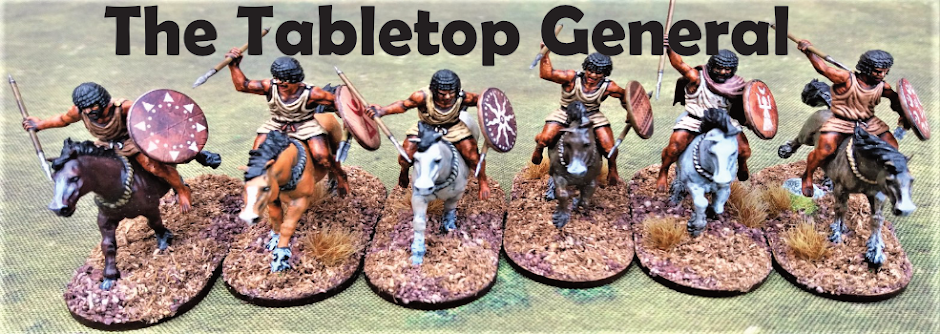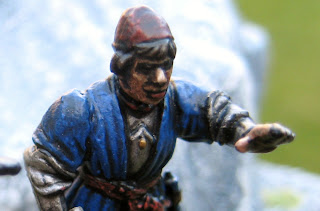This hill on the Allied right flank was a key position, as it overlooked the bridge, giving a clear view of the German defences. The British commander placed a Vickers machine gun and his artillery O.P. team on the hill.
The key position on the opposite flank was the church of Arrière du Pont. The church was occupied by the elite engineers of the 331st Infantry Regiment. The German O.P. team were placed on the roof of the church tower, giving them a commanding view of the battlefield.
The hill, as seen from the German position. The British on the hill came under constant fire from the 75mm Infantry Gun, positioned behind the main line of German infantry.
The British armour advancing, as seen from the ruined building in the village.
The Allied left-hook develops as the American company, supported by a Sherman, make a daring assault on the engineers in the church. If the church fell to the Americans, the German position in the village would become untenable. The Allied plan was to take the church and use it as a base from which to roll up the German line. The scene was set for a classic and bloody encounter.
After a bitter and bloody struggle against the German Engineers, the American company forced their way into the church. Needless to say, no prisoners were taken. This was the critical point in the battle and from this point it was only a matter of time for the boys of the 331st.
As usual with Rapid Fire, this battle was a brutal and bloody affair. Initially, the Germans held the upper hand as the Americans, in particular, suffered heavy casualties in their advance over largely open ground towards the church end of the village. The attack on the German right flank eventually succeeded because of the support given by the British armour, which enabled the Americans to get into a position to launch their assault on the engineers in the church. Had the engineers been able to hold their position, then the German commander would have had a larger force available to face the British infantry assualt on the bridge and, who knows what might have happened then!
A British Sherman advances across the battlefield, with a company of riflemen in close support.
A shot of the Allied attack on their left flank, early in the battle. This attack was badly timed and un-supported and lead to inevitable failure. The British riflemen were slaughtered by machine gun and mortar fire from the defenders of the village. Only when the British commander committed his armour to support this attack, were the Americans able to drive home and take the vital church from the German engineers.


























